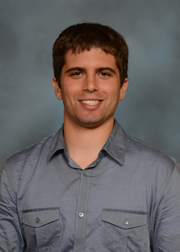Towards a Whole-cell Model of Escherichia coli
Derek Macklin, Stanford University

Whole-cell computational models comprehensively simulate the growth and division of single cells, explicitly accounting for the functions of all known gene products and their interactions. Such models have the potential to revolutionize biology by serving as a platform to interpret complex behaviors, prioritize experiments and enable design. In 2012, our lab completed the first whole-cell model of the simplest culturable organism, Mycoplasma genitalium. Since then we have focused our efforts on modeling Escherichia coli, one of the foundational model organisms in biology. In addition to having 10 times more genes and 50 times more molecules than M. genitalium, E. coli exhibits sophisticated regulation in response to environmental stimuli and perturbations. Currently, we have an E. coli model that incorporates the function of nearly 2,000 genes and synthesizes tens of thousands of data points collected from both high- and low-throughput experiments performed over the last six decades. In building this model, we have incorporated many of E. coli's feedback control mechanisms, decreased simulation runtime more than ten-fold and demonstrated the ability of our simulated cells to reliably reproduce over multiple generations. As we continue to incorporate gene functions, the model will provide us with systems-level insight into E. coli physiology.
Abstract Author(s): D.N. Macklin, N.A. Ruggero, J. Carrera, M.L. Paull, H. Choi, J.C. Mason, M.W. Covert


